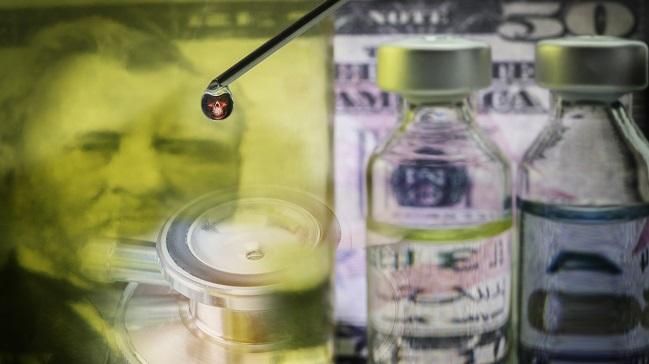Costs Up, Usage Down: Hospitals Curtailed Use of CV Meds When Prices Soared
The findings contradict claims that raising costs will not have a major impact on patient access to medications, the authors say.

Two IV cardiovascular medications, nitroprusside and isoproterenol, have been subject to substantial increases in price in recent years, and it appears hospitals have responded by curtailing their use, a new analysis shows.
Between 2012 and 2015, wholesale cost increased 32-fold for nitroprusside and 68-fold for isoproterenol. At the same time, the absolute numbers of patients treated with the two drugs at a sampling of US hospitals dropped by 53% and 35%, respectively, Umesh Khot, MD (Cleveland Clinic, OH), and colleagues report in a research letter published August 10, 2017, ahead of print in the New England Journal of Medicine.
“We really think this is something that is directly related to the price increases,” Khot told TCTMD. He pointed out that use of two similar IV medications without major price increases—nitroglycerin and dobutamine—did not decline during the same time span.
“The most powerful thing that we proved very strongly is that these price increases—even in the setting [where] these drugs are bundled as part of a larger payment and the patients aren’t often exposed to these prices—these price increases matter and they have changed prescribing behavior and ultimately utilization of these drugs has gone down,” Khot said.
He and his colleagues performed the study to examine whether the large price increases—which followed consolidation among pharmaceutical companies that left only one manufacturer for each drug during the study period—have had an impact on demand.
“It has been claimed in public testimony that these dramatic price increases would not decrease utilization of or patients’ access to these two drugs,” they write. “There is no intrinsic demand from patients or direct-to-consumer advertising for nitroprusside or isoproterenol, so we can examine the effect of these huge price increases on physician prescribing behavior for the drugs, which are used for the treatment of life-threatening cardiovascular conditions.”
From 2012 to 2015, wholesale acquisition costs rose from $27.46 to $880.88 per 50 mg of nitroprusside and from $26.20 to $1,790.11 per mg of isoproterenol.
According to information on 47 US hospitals from the Vizient database, those increases were accompanied by large drops in use of the drugs. Rates of use per 1,000 inpatients fell by 46% for nitroprusside and 40% for isoproterenol. In comparison, use of nitroglycerin and dobutamine remained stable or increased over the same time period.
“These findings refute the claim that price increases do not reduce patients’ access to these medications,” Khot et al argue. “Decreasing demand also indicates a correcting market response to increased prices that may be a valuable restraining force to pharmaceutical price increases.”
Khot said the reasons use declined for these drugs—the costs of which are typically hidden within a larger bundle—is an area of active investigation and pointed out that it could involve the hospital communicating with physicians, physicians responding to price increases on their own, or something on the pharmacy side. “It’s a little bit of speculation in terms of exactly what they’re doing, but the hospitals are still responding to these price increases in a way that they’re trying to minimize the impact in some fashion,” Khot said.
It also remains unclear, he noted, whether patient outcomes have been affected by the issue.
Todd Neale is the Associate News Editor for TCTMD and a Senior Medical Journalist. He got his start in journalism at …
Read Full BioSources
Khot UN, Vogan ED, Militello MA. Nitroprusside and isoproterenol use after major price increases. N Engl J Med. 2017;377:594-595.
Disclosures
- The study was supported by unrestricted philanthropic funding to the Heart and Vascular Institute Center for Healthcare Delivery Innovation, Cleveland Clinic.
- Khot reports receiving personal fees from AstraZeneca outside the submitted work.


Comments